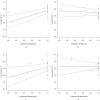Modular component exchange and outcome of DAIR for hip and knee periprosthetic joint infection : a systematic review and meta-regression analysis
- PMID: 34592839
- PMCID: PMC8558449
- DOI: 10.1302/2633-1462.210.BJO-2021-0090.R1
Modular component exchange and outcome of DAIR for hip and knee periprosthetic joint infection : a systematic review and meta-regression analysis
Abstract
Aims: The aim of this meta-analysis is to assess the association between exchange of modular parts in debridement, antibiotics, and implant retention (DAIR) procedure and outcomes for hip and knee periprosthetic joint infection (PJI).
Methods: We conducted a systematic search on PubMed, Embase, Web of Science, and Cochrane library from inception until May 2021. Random effects meta-analyses and meta-regression was used to estimate, on a study level, the success rate of DAIR related to component exchange. Risk of bias was appraised using the (AQUILA) checklist.
Results: We included 65 studies comprising 6,630 patients. The pooled overall success after DAIR for PJI was 67% (95% confidence interval (CI) 63% to 70%). This was 70% (95% CI 65% to 75%) for DAIR for hip PJI and 63% (95% CI 58% to 69%) for knee PJI. In studies before 2004 (n = 27), our meta-regression analysis showed a 3.5% increase in success rates for each 10% increase in component exchange in DAIR for hip PJI and a 3.1% increase for each 10% increase in component exchange for knee PJI. When restricted to studies after 2004 (n = 37), this association changed: for DAIR for hip PJI a decrease in successful outcome by 0.5% for each 10% increase in component exchange and for DAIR for knee PJI this was a 0.01% increase in successful outcome for each 10% increase in component exchange.
Conclusion: This systematic review and meta-regression found no benefit of modular component exchange on reduction of PJI failure. This limited effect should be weighed against the risks for the patient and cost on a case-by-case basis. The association between exchange of modular components and outcome changed before and after 2004. This suggests the effect seen after 2004 may reflect a more rigorous, evidence-based, approach to the infected implant compared to the years before. Level of Evidence: Level III Cite this article: Bone Jt Open 2021;2(10):806-812.
Keywords: DAIR; Modular component exchange; Periprosthetic joint infection; Periprosthetic joint infection (PJI); Total joint replacement; debridement; debridement, antibiotics, and implant retention; hips; knee periprosthetic joint infection; knees; lower limb arthroplasties; randomized controlled trials; regression analysis; revision arthroplasties.
Conflict of interest statement
Figures



References
-
- Zmistowski B, Karam JA, Durinka JB, Casper DS, Parvizi J. Periprosthetic joint infection increases the risk of one-year mortality. J Bone Joint Surg Am. 2013;95-A(24):2177–2184. - PubMed
-
- Shahi A, Tan TL, Chen AF, Maltenfort MG, Parvizi J. In-hospital mortality in patients with periprosthetic joint infection. J Arthroplasty. 2017;32(3):948–952. - PubMed
-
- Osmon DR, Berbari EF, Berendt AR, et al. . Executive summary: diagnosis and management of prosthetic joint infection: clinical practice guidelines by the Infectious Diseases Society of America. Clin Infect Dis. 2013;56(1):1–10. - PubMed

